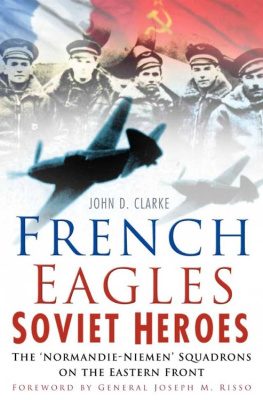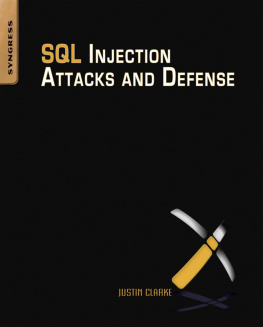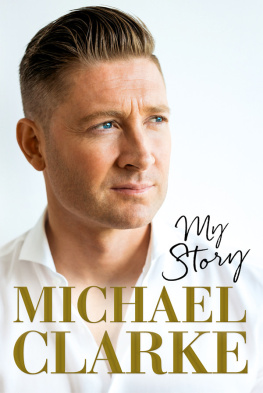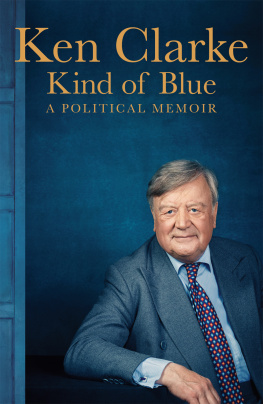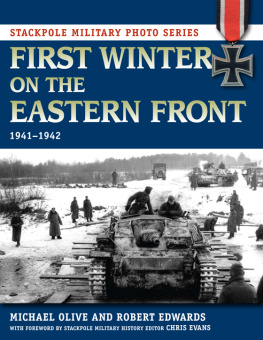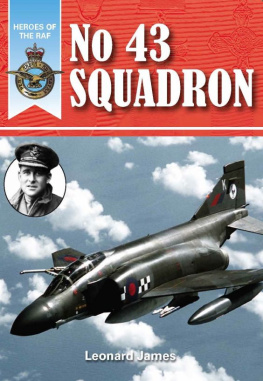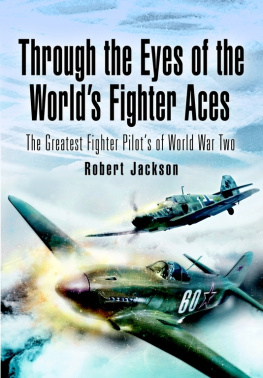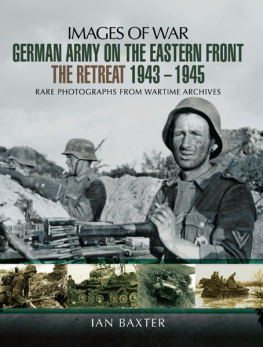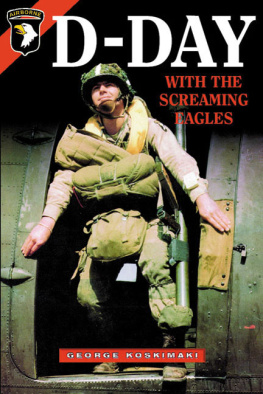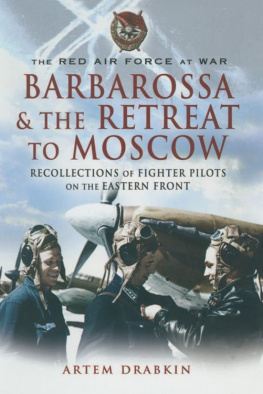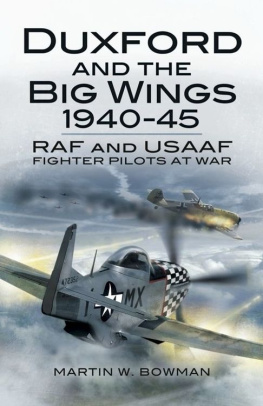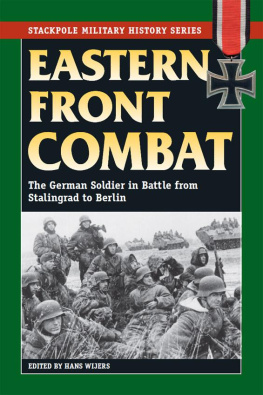FRENCH
EAGLES
SOVIET HEROES
FRENCH
EAGLES
SOVIET HEROES
THE NORMANDIE-NIEMEN
SQUADRONS
ON THE EASTERN FRONT
JOHN D. CLARKE
FOREWORD BY GNRAL JOSEPH M. RISSO

First published in 2005
The History Press
The Mill, Brimscombe Port
Stroud, Gloucestershire, GL5 2QG
www.thehistorypress.co.uk
This ebook edition first published in 2013
All rights reserved
John D. Clarke, 2005, 2013
The right of John D. Clarke to be identified as the Author of this work has been asserted in accordance with the Copyrights, Designs and Patents Act 1988.
This ebook is copyright material and must not be copied, reproduced, transferred, distributed, leased, licensed or publicly performed or used in any way except as specifically permitted in writing by the publishers, as allowed under the terms and conditions under which it was purchased or as strictly permitted by applicable copyright law. Any unauthorised distribution or use of this text may be a direct infringement of the authors and publishers rights, and those responsible may be liable in law accordingly.
EPUB ISBN 978 0 7524 9574 3
Original typesetting by The History Press
CONTENTS
Appendices
ACKNOWLEDGEMENTS
W ithout the help of my good friend Rmi Theys, the task of telling the story of this unique French Fighter Air Squadron would have proved almost impossible. His detailed knowledge of the Normandie-Niemen Regiment was quite astounding. His kindness in allowing me access to the Eichenbaum documents (of which he is the custodian) was exceptionally helpful. His ability to obtain information and photographs relating to this French Fighter Squadron was amazing. Most of all, his contact with the veterans has proved invaluable.
My unreserved gratitude to Gnral Joseph Risso, ace of the Normandie-Niemen Regiment, for his generosity of spirit in providing first-hand accounts, original documents and photographs of that illustrious fighter squadron. Not least is my gratitude for his time spent reading the manuscript and making comments and corrections for this book. It was a great privilege meeting Gnral Risso and to learn first hand of his personal experiences serving Free France, first in the RAF and later during the momentous years flying combat missions on the Eastern Front with the Soviet Air Force.
My appreciation also to Captain Dr Marcello Ralli of Rome, the leading aeronautical artist, for providing such excellent detailed drawings of Soviet fighter aircraft.
It is not possible to thank personally veterans like Igor Eichenbaum and Jean de Pange or others who kept the Normandie-Niemen Service Journal, which forms the day-by-day basis of this account of the Regiment, for these illustrious scribes have long since joined the band of immortals.
My thanks to my brother A.A. Clarke, whose knowledge of all things aeronautical has proved essential, especially the technical details of Russian aircraft of the Second World War, and to Ross Eden for translating the wartime Normandie-Niemen Service Journal.
FOREWORD
M y very warm congratulations as well as my best thanks to John D. Clarke for all his immense work, which goes beyond the saga of the Free French Fighter Squadron No. 3, Normandie, later to be known as the Normandie-Niemen Regiment.
Reflecting on those days of action has reminded me of the earlier so exalting two years spent with the Royal Air Force, especially the time I served in the night fight initiation known as Turbin-Light.
It has been a rare privilege to be a member of 253 Squadron RAF, where we were all united around a common goal. The squadron comprised of both British and Dominion pilots as well as two Norwegians, two Americans and the four French pilots who, besides myself, included such good comrades as Bguin, Massart and Mah.
As softly autumn mist settles and slowly the horizon dims in the far, it is good to join and recall the faithful companions so never their remembrance leaves us.
With all my gratitude,
Joseph M. Risso
Gnral de Brigade Arienne
Grand Croix de lOrder de la Lgion dHonneur
Compagnon de la Libration
INTRODUCTION
F ighting for ones country is every patriots duty. When this duty entails the hazards of escaping to serve in foreign lands, having to accept different military disciplines and customs, perhaps even wearing another countrys uniform, it requires a special dedication to the cause of freedom. It may also involve the knowledge that if captured by the enemy one would probably be executed and ones family sent to a concentration camp. So we can be sure that the men who volunteered for service with the Free French Groupe de Chasse 3 on the Eastern Front would have been of an extraordinarily formidable and tenacious character. Such were the pilots serving in the escadrilles of Normandie, later to be known as the Normandie-Niemen Regiment.
Some years ago my curiosity was kindled after learning that the prosecuting papers filed against Field Marshal Keitel at Nuremberg revealed that Keitels name had appeared on a document dated May 1943, issuing orders that Aviators of the Squadron Normandie shall be handed over for execution on capture. I wanted to know why these French aviators were so special, and so feared by the Nazis that they had to be treated like the British commandos who from November 1942, on the direct orders of Hitler, were to be executed on capture.
Normandie-Niemen was no ordinary fighter unit. By any standards it was unique; its accomplishments were quite staggering. Its pilots became the most highly decorated French fighter group of all time. They flew 5,240 combat sorties on the Eastern Front. Their abilities to engage and beat the Luftwaffe in aerial combat became legendary. The number of enemy aircraft they destroyed on the Eastern Front was confirmed to be 273, with a further 37 probable. In the last few months of the war in the skies over East Prussia they fought many duels with and beat the pilots of the formidable German Moulders Group. The Normandie-Niemen Regiment became the second-highest scoring fighter regiment serving in the Soviet Air Force. Four of the French pilots became Heroes of the Soviet Union and recipients of the Order of Lenin; others were decorated with the highest French and Soviet awards. All this came at a heavy price: forty-two Normandie pilots were killed during service in the Soviet Union. And the men of the Normandie-Niemen Regiment became the first of the Western allies to set foot upon and capture German territory.
It had always been my intention one day to set out a comprehensive history of the Regiment. Then quite by chance I had a phone call from Paris telling me that a batch of original Normandie-Niemen research documents from the desk of the late Igor Eichenbaum, Secretary-General of the Normandie veterans association, had surfaced in Paris. Reading these unique papers, I found the story so fascinating that I was determined to set down the facts. Naturally, in France the exceptional story of the Groupe Normandie-Niemen is well known and honoured, but, apart from brief details appearing in international technical journals catering for aeronautical buffs and aviation specialists, very little of this epic story has ever appeared in the English language.
Details have been taken directly from Normandie veterans, from the recently discovered Eichenbaum papers, and from the wartime Normandie-Niemen Service Journal. This journal sets out events from the time the Groupe de Chasse 3 was formed in Rayak on 1 September 1942 right through to the time Normandie-Niemen returned from the Soviet Union on 20 June 1945. The Service Journal, or Squadron Diary, was kept by dedicated officers, who entered the daily missions and combat victories of each escadrille, including the official duties and social happenings of the Regiment. The diary, often written by the light of petrol lamps after the officers had completed their arduous service duties, frequently after a period of extreme fatigue, records glorious achievements and great sadness.

